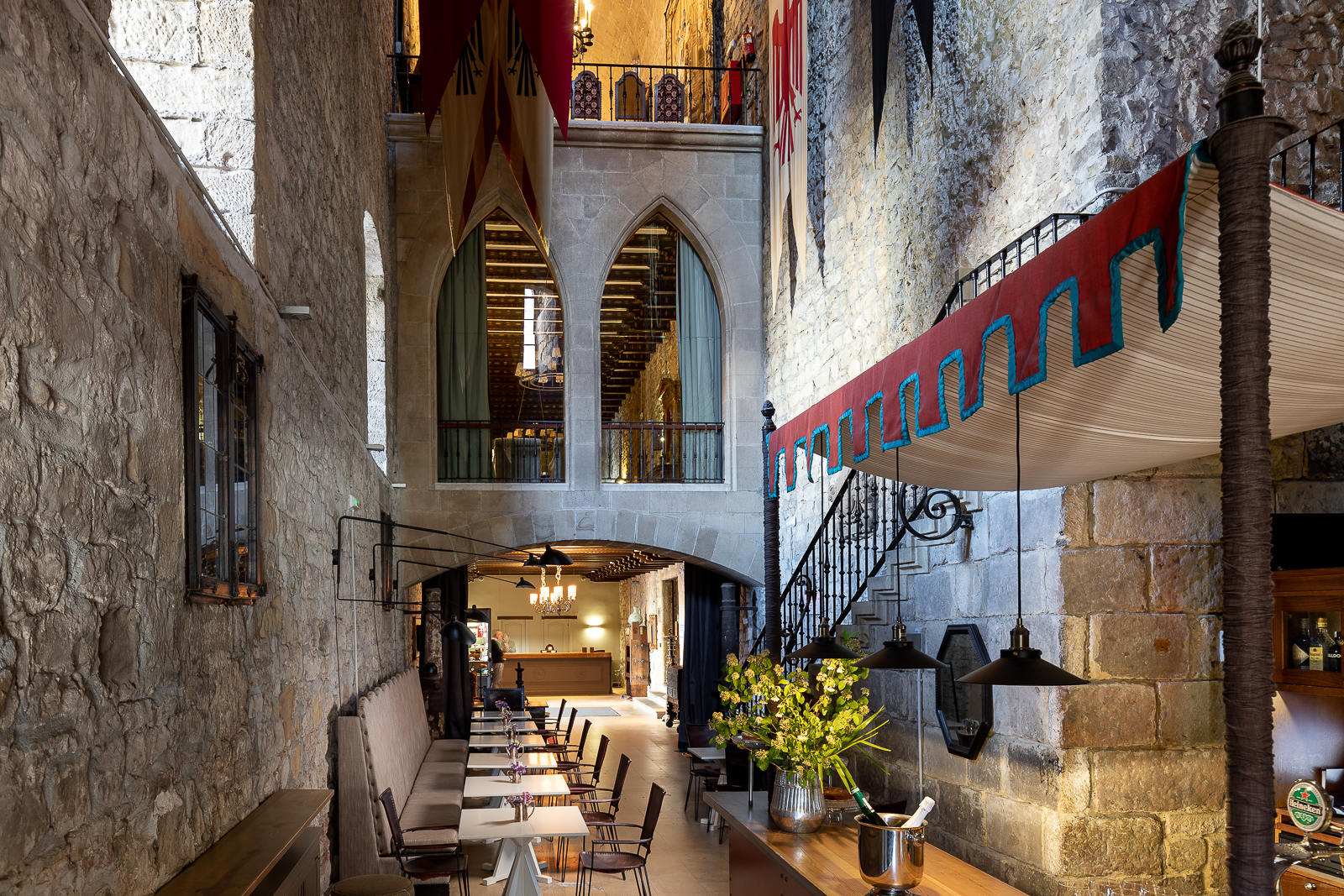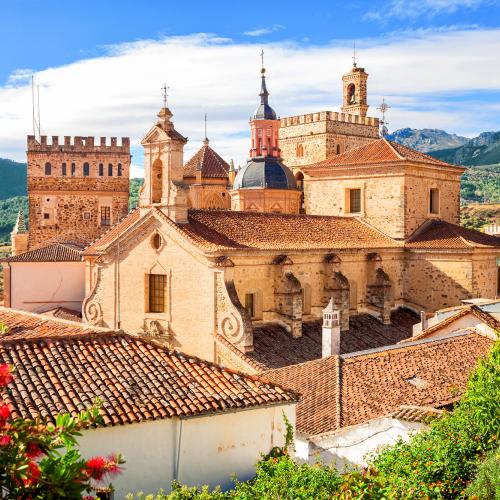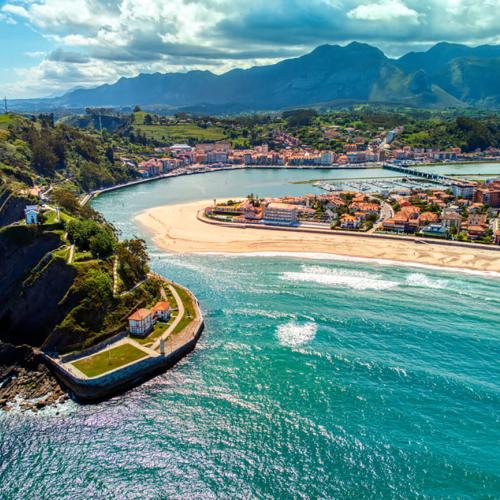National Geographic magazine has chosen the " medieval gems of Spain worth discovering". Villages with cobbled streets, historic walled centres and old convents and palaces where you can also find a Parador. Come and discover these nine Paradors and learn about their history.
- Puebla de Sanabria (Zamora)
The town of Puebla de Sanabria became a strategic enclave in the Middle Ages as a crossing point to Portugal. It is one of the best-preserved fortified enclosures in the province of Zamora and has been declared a Historic-Artistic Site. The town is surrounded by a rich natural heritage and in this setting is the Parador, a stone building that was built to form part of the State Road Hostel Network.

- Sos del Rey Católico (Zaragoza)
This beautiful medieval village in the Cinco Villas region of Zaragoza is so called because Ferdinand, the future husband of Isabella of Castile, was born there. The magazine highlights the beauty of the Plaza de la Villa, with a unique building of 16th-century Aragonese civil architecture. Another of the most representative buildings in Sos del Rey Católico is the Parador, a stone building with wooden balconies and spectacular views of the surrounding countryside. The best plan in Sos is to get lost in its narrow streets and discover the palaces, churches and chapels that fill this town.
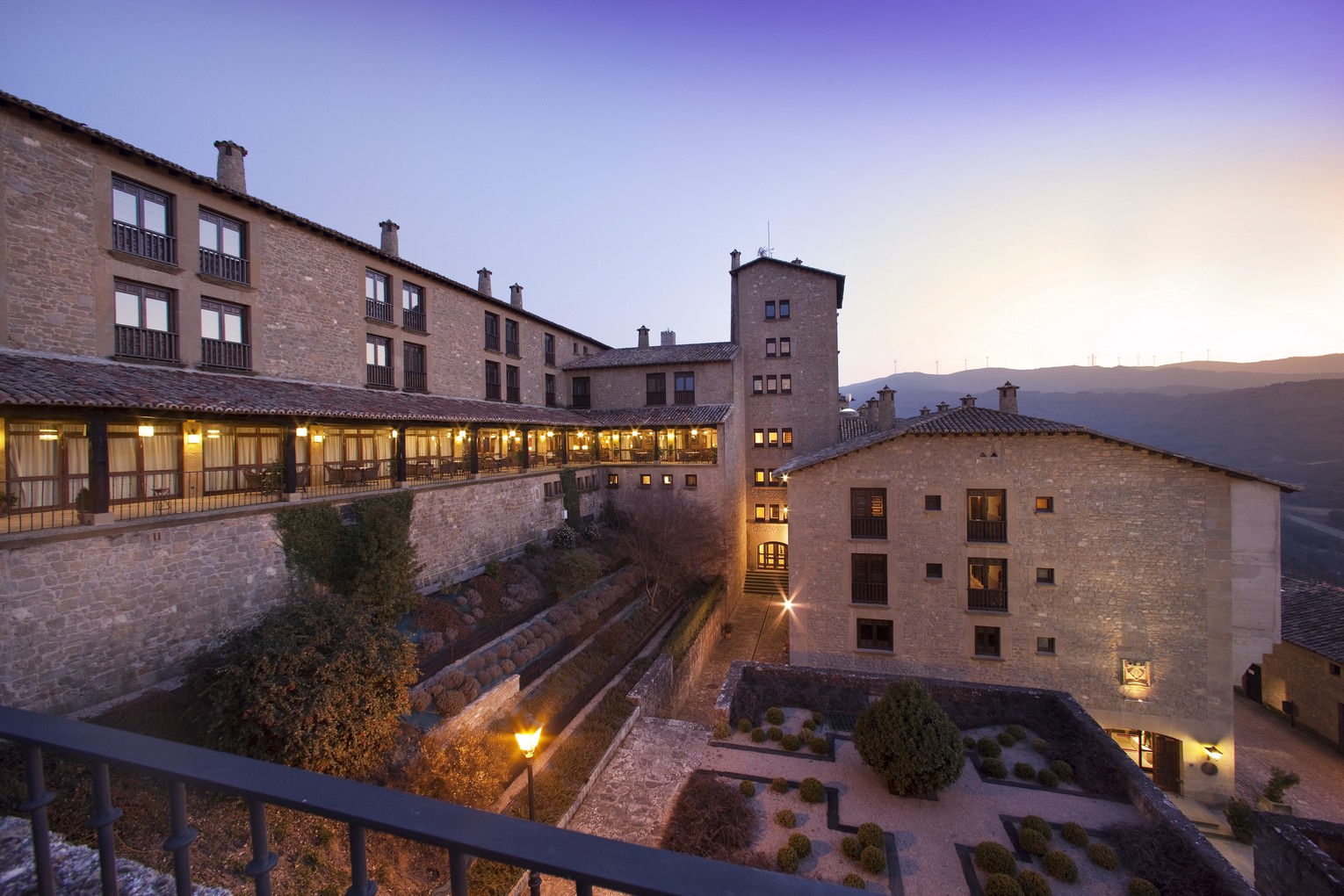
- Trujillo (Cáceres)
Trujillo's Plaza Mayor is a real spectacle. The statue dedicated to the conqueror of Peru, Francisco Pizarro, born in Trujillo, presides over an imposing square in which the palace of the Marquis of the Conquest stands out, with a large balcony at one of its corners and an enormous coat of arms of Charles V. Trujillo is full of historic buildings such as the Parador, a 16th-century Franciscan convent. The convent of Santa Clara is built around a central cloister with Renaissance columns and arches, which connects to an old church with a vaulted ceiling where the dining room is located.
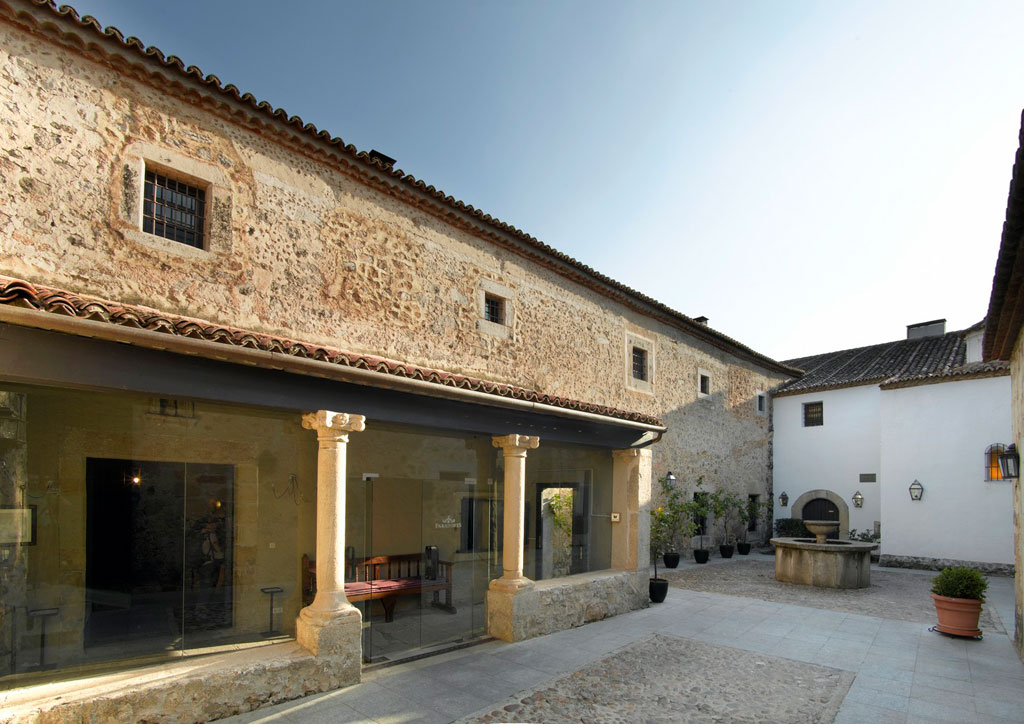
- Alarcón (Cuenca)
In this small town in the province of Cuenca, the Parador is the main attraction. The castle, with more than 13 centuries of history, stands out at the top of the village in an exceptional spot, located on a gorge over the river Júcar. At the top of the Pico de los Hidalgos, the views of the area are unbeatable. It is surrounded by a double defensive enclosure and is unique to the rest of the wall that surrounds the town of Alarcón.
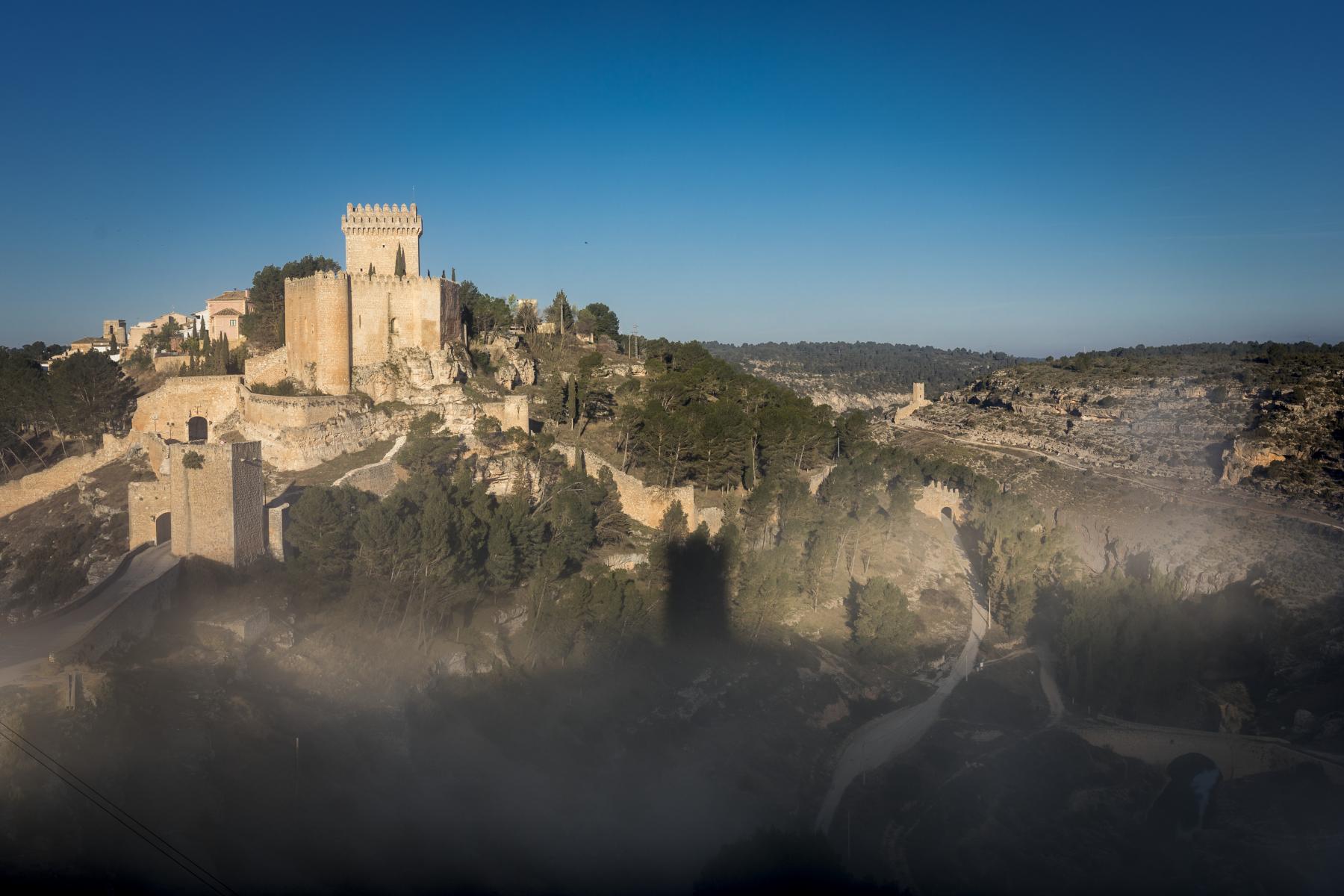
- Sigüenza (Guadalajara)
The same thing happens in Sigüenza as in Alarcón: the first thing you see (and which makes an impression) is the castle, where the Parador is located. This 12th-century fortress was built on the site of an Arab citadel and was once home to cardinals and bishops. Inside, its cobbled courtyard, wooden balconies and 13th-century Romanesque chapel are perfect for enjoying this medieval town.

- Santillana del Mar (Cantabria)
The town of Santillana del Mar was founded in the 8th century, when a group of monks carrying the relics of a martyr called Juliana settled there and built a hermitage dedicated to her. Over time, a village called "Sancta Luliana" was erected, known today as Santillana. It has outstanding medieval buildings, including the collegiate church of Santa Juliana, the House of Leonor de la Vega and the towers of the Merino, the Velarde and Don Borja. Furthermore, this town is one of the few in Spain to have two Paradors: Santillana del Mar and Santillana Gil Blas.
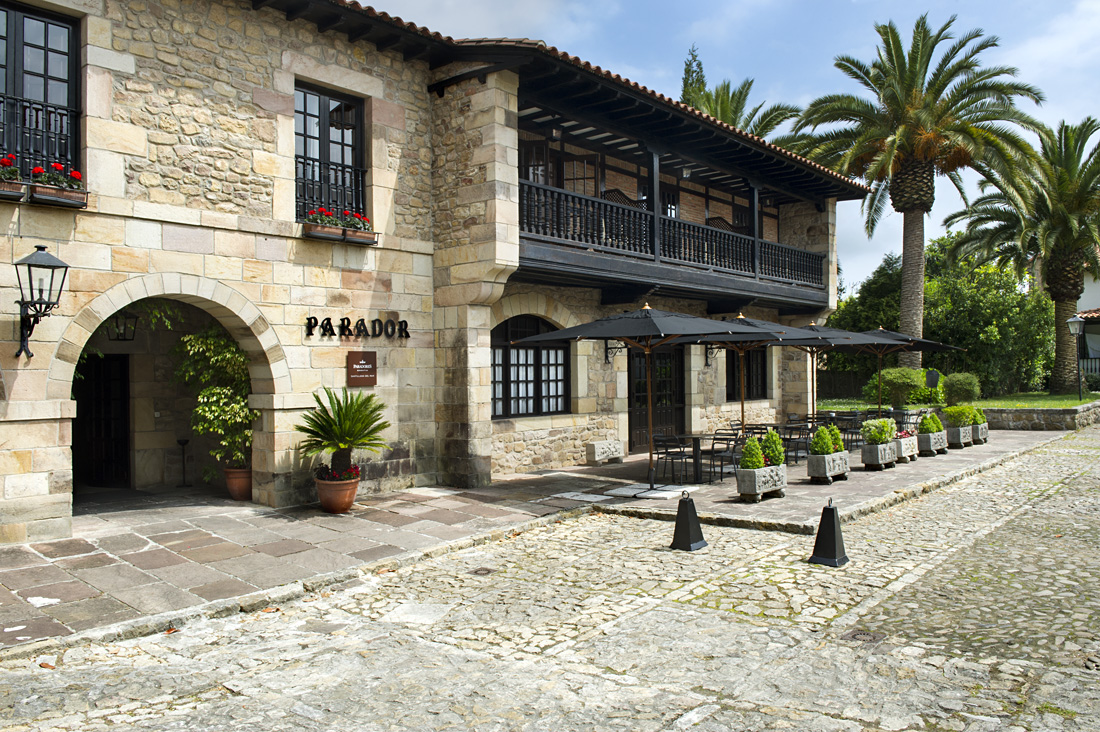
- Olite (Navarra)
This town in the heart of Navarre looks like something out of a fairy tale. Olite has one of the most beautiful Gothic-civil ensembles in Europe. In addition, its beautiful historic quarter is full of stone mansions, Renaissance and Baroque palaces and beautiful churches. The Parador is located next to the medieval castle, known as the Royal Palace, the town's main attraction.
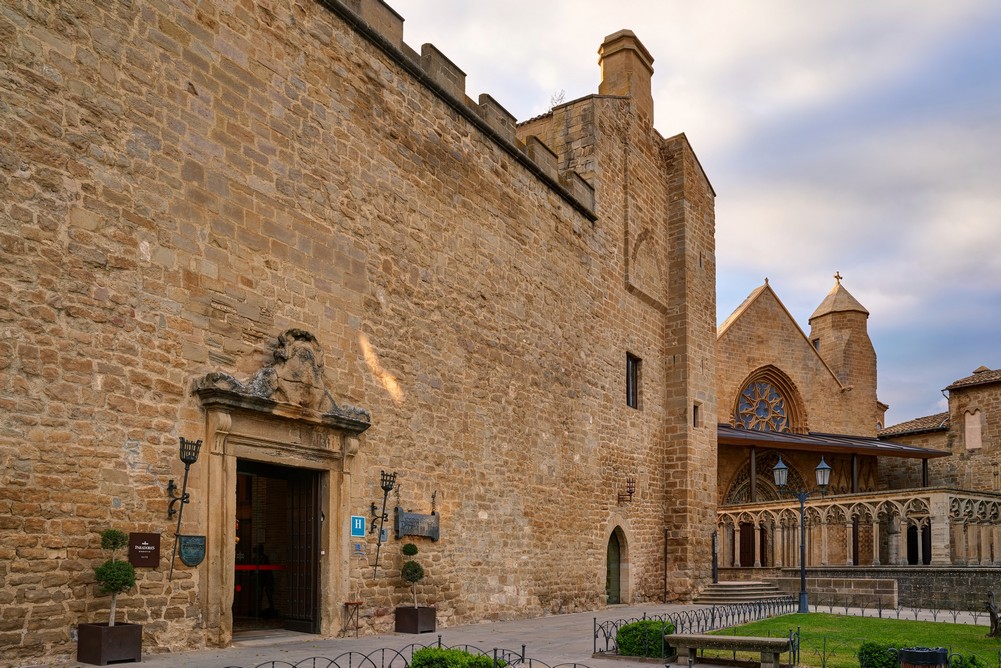
- Zafra (Badajoz)
This town was founded almost a thousand years ago as a Muslim fortress between the Taifa kingdoms of Seville and Badajoz. One of the most beautiful buildings in Zafra is the palace of the Duke of Feria, home to the Parador. Among the famous people who have stayed there is the Extremaduran explorer Hernán Cortés.
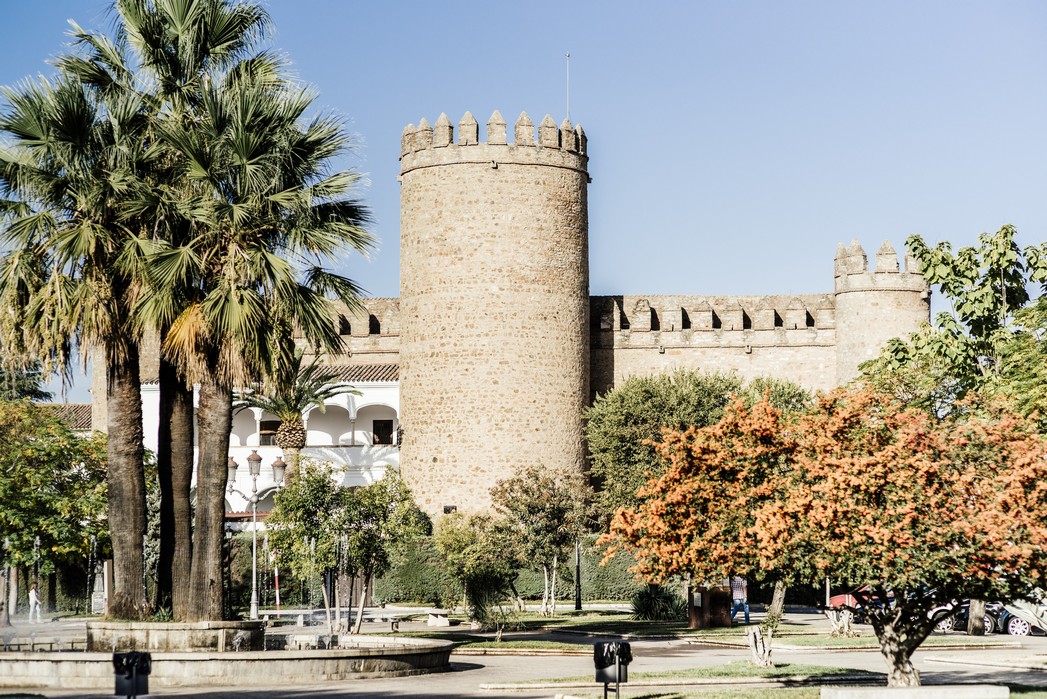
- Hondarribia (Guipúzcoa)
Hondarribia is located on the border with France, in a beautiful natural setting open to the bay of Txingudi, where the river Bidasoa reaches the Bay of Biscay. And in its narrow pedestrian streets is the castle of Charles V, home to the Parador de Hondarribia. A 10th century construction with imposing stone walls in which the Emperor Charles V, Philip IV, Philip V and even Diego de Velázquez stayed. Inside you can enjoy the marvellous tapestries designed by Rubens describing the story of Achilles.
